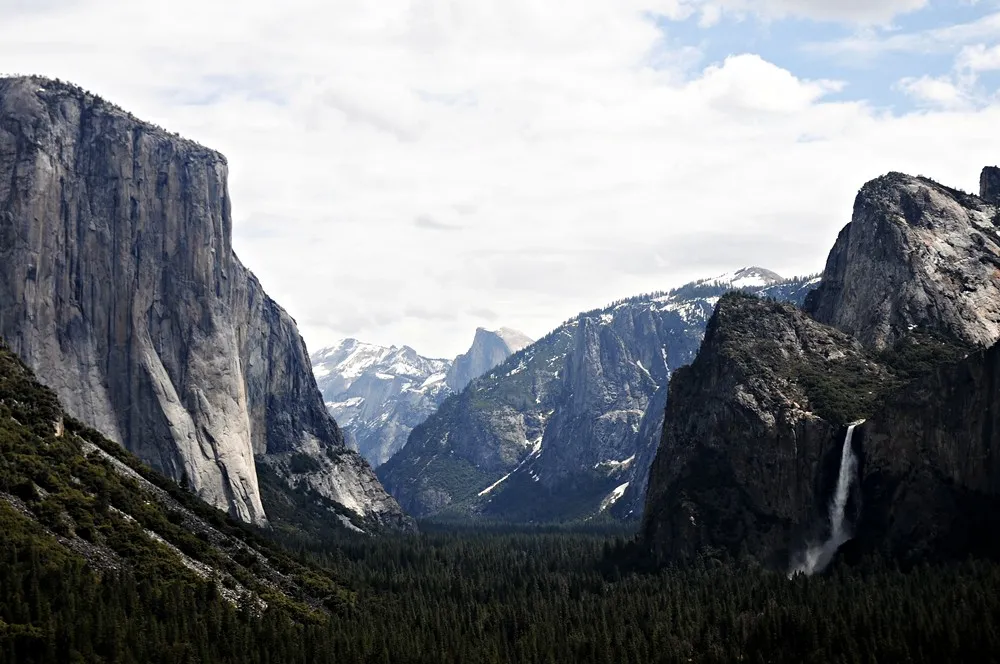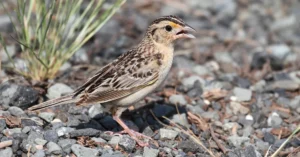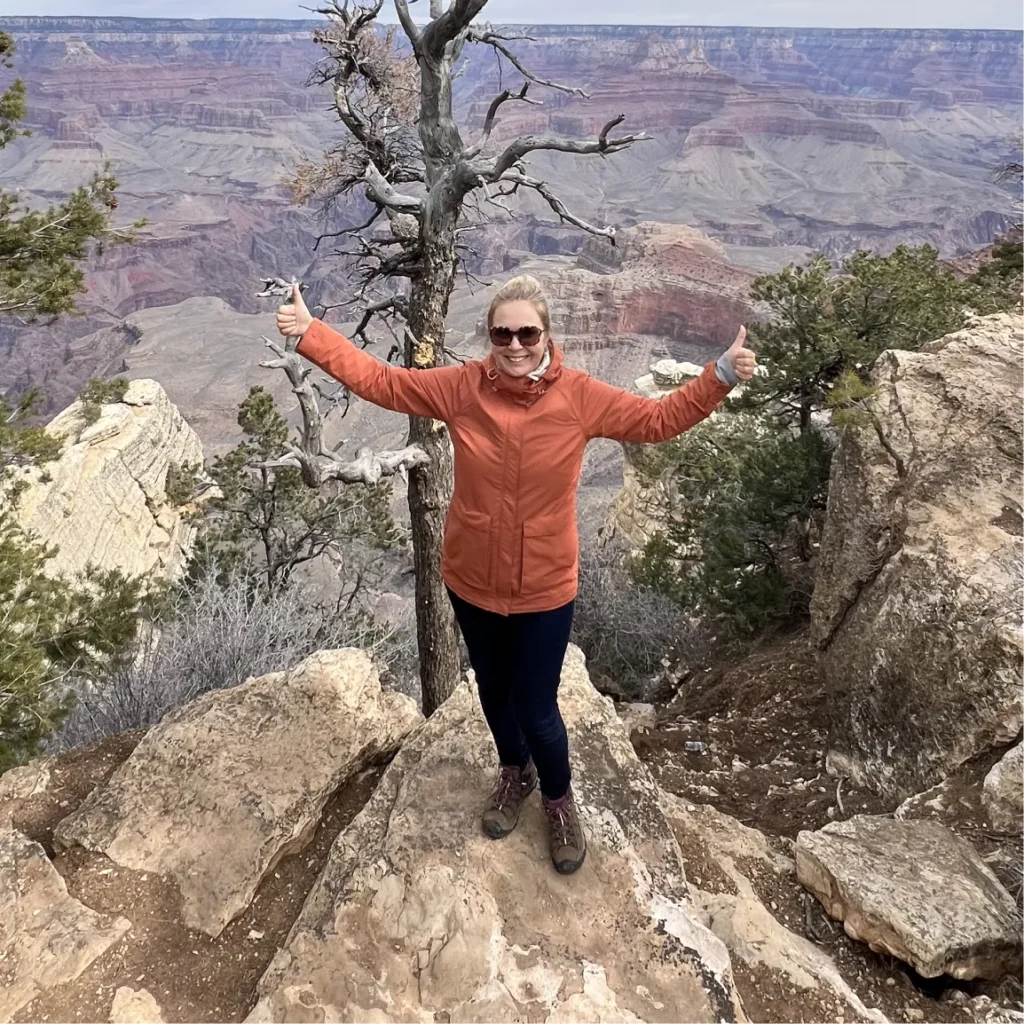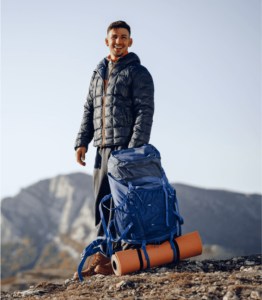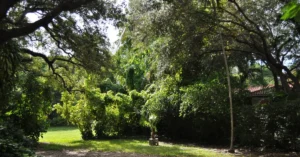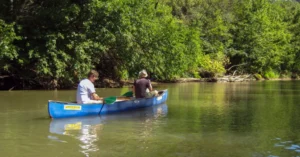Seasonal wildlife watching is a wonderful way to see animals in their natural habitats throughout the year. Different seasons bring different animals and behaviors to observe.
In the spring, you can see baby animals exploring their new world. Summer offers the chance to watch animals in their active months, while fall is perfect for bird migrations. Winter reveals animals adapting to the cold.
The USA is full of amazing places for wildlife watching. Each state has unique spots to visit. National parks and wildlife refuges are especially good for seeing animals. For example, in Alaska, you can watch bears catching fish in the rivers.
In Florida, you might spot gentle manatees swimming in warm waters. Each location provides a special adventure. So, grab your binoculars, pack your bags, and get ready for an exciting journey through the best seasonal wildlife watching locations in the USA.
National Parks To Watch In Spring
1. Grand Canyon National Park

Grand Canyon National Park is a majestic place to visit in the spring. The park’s terrain is stunning, with deep canyons, high cliffs, and the Colorado River cutting through it.
Spring is the best time to visit because the weather is mild, and it’s much less crowded than in the summer. The flora is also beautiful in spring, with many wildflowers blooming and the desert plants coming to life after winter.
In spring, the park is home to many animals. You might see deer, bighorn sheep, and many types of birds. Spring is also a great time for activities. You can go rafting on the Colorado River or take a mule ride down into the canyon.
Wildflower viewing is another popular activity, with many trails offering stunning views of blooming flowers. Visit Grand Canyon Village to find hiking trails that range from easy to strenuous.
Here are some tips for visiting Grand Canyon National Park in the spring:
- Wear layers; the weather can change quickly.
- Bring plenty of water, especially for hikes.
- Start your hikes early to avoid the midday sun.
- Check the park’s website for trail conditions.
- Reserve accommodations in advance, as spring is a popular time to visit.
2. Zion National Park

Zion National Park is one of the best national parks to visit in spring. The park’s terrain features towering sandstone cliffs, narrow canyons, and lush valleys.
Spring is the perfect time to visit because the weather is mild, and the wildflowers are in full bloom. The park is also less crowded, making it easier to enjoy the stunning scenery.
In spring, Zion is alive with wildlife. You can see many birds, such as peregrine falcons and California condors. Wildflower viewing is a popular activity, with vibrant blooms decorating the park.
Waterfalls are at their best in spring, fueled by the melting snow. If you prefer a relaxed visit, the Zion-Mount Carmel highway offers a beautiful scenic drive where you can enjoy the park’s beauty from your car.
Here are some tips for visiting Zion National Park in the spring:
- Bring a camera for the amazing views.
- Wear comfortable walking shoes for exploring.
- Pack a picnic to enjoy at one of the park’s many scenic spots.
- Check the weather forecast before your trip.
- Arrive early to find parking easily, as it can get busy later in the day.
3. Big Bend National Park

Big Bend National Park is a wonderful place to visit in the spring. The park’s terrain includes vast desert landscapes, rugged mountains, and the winding Rio Grande.
Spring is the best time to visit because the weather is pleasant, and the desert plants are in bloom.
With over 1,200 species of plants, the park offers a unique and colorful display of flora.
Big Bend is also a paradise for bird lovers. Home to 450 species of birds, it’s a great spot for birding.
You can enjoy various activities like hiking through scenic trails, taking leisurely drives to enjoy the landscape, and participating in river activities on the Rio Grande.
At night, the park is one of the darkest places in America, making it perfect for stargazing. You can see the Milky Way in all its glory.
Here are some tips for visiting Big Bend National Park in the spring:
- Bring binoculars for bird watching.
- Pack plenty of water and snacks for hikes.
- Wear sun protection; the sun can be strong.
- Check the river conditions if you plan to do river activities.
- Plan for stargazing by bringing a blanket and warm clothes for the cool desert nights.
National Parks To Watch In Summers
1. Yellowstone National Park

Yellowstone National Park is a fantastic place to visit in the summer. The park’s diverse terrain includes geysers, hot springs, forests, and rivers.
Summer is the perfect time to explore because the weather is warm, and the park is teeming with life.
With over 1,100 species of native plants, 200 exotic plants, and around 400 species of thermophiles, the vibrant colors around the hot springs are especially stunning this time of year.
Yellowstone is home to a plethora of wildlife. You can see elk, bison, moose, deer, bears, and wolves throughout the park.
Bird watchers will be thrilled with over 300 species of birds that inhabit Yellowstone in the summer.
Hiking through the park offers many opportunities to spot these animals in their natural habitats and enjoy the park’s scenic beauty.
Here are some tips for visiting Yellowstone National Park in the summer:
- Stay on designated trails to protect wildlife and plants.
- Carry bear spray and know how to use it.
- Wear layers; temperatures can vary greatly.
- Start your days early to avoid the crowds.
- Bring a good map, as cell service is limited in the park.
2. Denali National Park

Denali National Park is a paradise for wildlife enthusiasts and photographers. The park’s diverse terrain includes vast tundra, forests, and towering mountains, with the majestic Denali as the centerpiece.
Summer is the best time to visit because the wildlife is active, and the landscapes are lush and vibrant. With 39 mammal species, 169 bird species, and 14 fish species, there is always something to see.
The park’s main road, Denali Park Road, stretches 92 miles from east to west. During the high season, private vehicles can only drive up to Mile 15, known as the Savage River checkpoint. Beyond this point, shuttle buses take visitors deeper into the park.
You’ll often spot moose within the initial 15 miles of Park Road. In spring and summer, these creatures are frequently observed near the park’s entrance and occasionally even around the Denali Visitor Center campus and Riley Creek Campground.
Here are some tips for visiting Denali National Park in the summer:
- Bring binoculars for wildlife viewing.
- Book shuttle bus tickets in advance for deeper park access.
- Wear sturdy hiking boots for exploring trails.
- Carry insect repellent to keep bugs at bay.
- Be prepared for sudden weather changes by dressing in layers.
3. Glacier Bay

Glacier Bay National Park is a stunning destination to visit in the summer. The park features magnificent glaciers, lush forests, and pristine waters.
Summer is the best time to explore because the weather is pleasant, and the park’s waters come alive with marine life. Among the true giants of Glacier Bay’s waters are the endangered Humpback Whales.
These massive creatures, measuring 40-50 feet long and weighing 40 tons, travel to Glacier Bay for one reason: food.
Humpback Whales are remarkable for their size and acrobatic abilities. Visitors are often amazed by their explosive full-body breaches, pectoral fin slaps, tail-lobbing, and lunge-feeding maneuvers.
In a single gulp, a Humpback Whale can take in more water—15,000 gallons—than a typical home uses in five months. Watching these majestic creatures in action is an unforgettable experience.
Here are some tips for visiting Glacier Bay National Park in the summer:
- Bring a good pair of binoculars for whale watching.
- Dress in layers; weather can change quickly.
- Book a guided boat tour for the best wildlife viewing.
- Pack a waterproof camera to capture stunning moments.
- Check the park’s schedule for ranger-led programs and talks.
National Parks To Watch In Fall
1. Rocky Mountain National Park

Rocky Mountain National Park is a beautiful place to visit in the fall. The park’s diverse terrain includes towering peaks, lush valleys, and stunning alpine tundra.
Autumn is an active season for the park’s wildlife, making it a magnificent time for animal viewing. It’s mating season for several animals, including bighorn sheep and elk. If you’re lucky, you might hear elk bugling or see sheep butting heads.
The best spot to witness elk bugling is the Kawuneeche Valley on the west side of the park.
Elk are highly social animals and travel in various herd sizes throughout the year. In the summer, herds move to higher elevations to feed on tundra vegetation.
In the winter, they move down to lower elevations of the park and into the Front Range. Herds can grow as large as a few hundred individuals, making for an impressive sight.
The park’s alpine tundra, the area above the tree line, is also known for its beautiful wildflowers and high-elevation vegetation.
Here are some tips for visiting Rocky Mountain National Park in the fall:
- Bring a camera for capturing wildlife and scenic views.
- Wear layers to stay warm in changing temperatures.
- Use binoculars for better wildlife viewing.
- Visit early in the morning or late in the evening for the best chances of seeing animals.
- Check the park’s website for any seasonal road closures.
2. Great Smoky Mountains National Park

Great Smoky Mountains National Park is a fantastic place to visit in the fall. The park’s stunning foliage and cooler weather make it an ideal time for a visit, with fewer crowds compared to the summer months.
The park offers many amenities like campgrounds and visitor centers. Nearby towns like Gatlinburg and Pigeon Forge provide plenty of food and lodging options, ensuring a comfortable stay.
In the fall, the park is teeming with wildlife. You might spot black bears, white-tailed deer, and elk, along with many bird species.
Hiking trails, like the Alum Cave Trail, offer beautiful views and great wildlife-watching opportunities. The cooler temperatures and vibrant colors make hiking even more enjoyable.
If you visit in October, don’t miss Gatlinburg’s annual Ober’s OktOBERfest. It’s a fun event with plenty of activities and festivities. Here are some tips for visiting Great Smoky Mountains National Park in the fall:
- Bring a good pair of hiking boots for exploring trails.
- Carry a camera to capture the stunning fall colors.
- Pack layers to stay warm as temperatures can vary.
- Start hikes early to enjoy the tranquility and wildlife.
- Check the park’s website for any event details and trail conditions.
3. Katmai National Park

Katmai National Park is a pristine wilderness gem, perfect for a fall visit. One of its primary purposes is to protect habitats and populations of fish and wildlife, making it a haven for nature lovers.
The park’s isolation ensures visitors experience untouched nature and unparalleled tranquility. Katmai is renowned for its raw and wild beauty, offering an escape into the heart of nature.
The park is famous for its brown bears, especially from June to October. During this time, grizzlies congregate at the rivers to feast on returning salmon. Watching these majestic bears in their natural habitat is a unique experience.
You can see them walking around, catching fish, and stomping through the river, providing unforgettable wildlife encounters.
Here are some tips for visiting Katmai National Park in the fall:
- Bring a good pair of binoculars for wildlife viewing.
- Wear sturdy, waterproof boots for exploring the riverbanks.
- Pack layers to stay warm in the cool fall weather.
- Carry a camera with a zoom lens for capturing close-up shots of bears.
- Check the park’s website for guidelines on safe bear viewing practices.
National Parks To Watch In Winters
1. Everglades National Park

Everglades National Park is a perfect winter destination, basking in subtropical balminess and typically fair weather skies.
This season is ideal for seeing the park’s wild inhabitants, as animal activity concentrates around dwindling waterways and pools. The cooler temperatures and dry conditions make it comfortable for exploring this unique ecosystem.
Winter is the best time to explore the paved paths and boardwalks of the Anhinga Trail and Shark Valley. These trails offer essentially guaranteed sightings of iconic Everglades wildlife.
You can see American alligators, anhingas, cormorants, herons, wood storks, roseate spoonbills, and gallinules. The diverse birdlife is a treat for bird watchers and photographers alike.
For a more adventurous experience, try kayaking in the Everglades. Kayakers might see manatees, tarpon, sawfish, American crocodiles, and bottlenose dolphins. Here are some tips for visiting Everglades National Park in the winter:
- Wear lightweight, breathable clothing for comfort.
- Bring insect repellent to ward off mosquitoes.
- Carry binoculars for bird and wildlife watching.
- Pack plenty of water and snacks for your outings.
- Check the park’s website for trail conditions and wildlife updates.
2. Voyageurs National Park

Voyageurs National Park is a unique winter destination, known for its interconnected waterways. The main way to access the park is via kayak, canoe, or boat, though there are also roads and hiking trails.
The park’s landscape, blanketed in snow, offers a serene and picturesque winter wonderland, perfect for those seeking tranquility and adventure.
The park is home to 50 species of mammals and 100 species of birds. In winter, you might see loons, double-crested cormorants, ravens, and warblers. Voyageurs is also known for its Timberwolves, which hunt in packs of four to eight.
These majestic animals typically avoid humans, but their presence adds to the park’s wild allure. Winter is a great time to experience the park’s diverse wildlife in a pristine, quiet setting.
Here are some tips for visiting Voyageurs National Park in the winter:
- Dress warmly in layers to stay comfortable.
- Bring snowshoes or skis for exploring the trails.
- Pack binoculars for spotting wildlife.
- Carry a map and GPS, as some areas may have limited cell service.
- Check the park’s website for winter safety guidelines and trail conditions.
3. Yosemite National Park

Yosemite National Park transforms into a winter wonderland with snowy peaks, foggy slopes, icy waterfalls, and frozen streams, beckoning visitors to enjoy its beauty and fun.
The Glacier Point/Badger Pass Road is plowed in winter, allowing skiers and snowboarders to reach the popular Badger Pass ski area. The park’s serene winter landscapes offer a peaceful retreat for nature lovers.
Yosemite supports over 400 species of vertebrates, including fish, amphibians, reptiles, birds, and mammals. The park is home to 90 mammal species and a variety of amphibians, including eleven native species and one non-native species.
An astounding 262 species of birds have been documented, along with 22 species of reptiles. This rich biodiversity makes Yosemite a great place for wildlife enthusiasts to explore, even in winter.
The park’s diverse habitats range from thick foothill chaparral to conifer forests and expanses of alpine rock. Here are some tips for visiting Yosemite National Park in the winter:
- Wear warm, layered clothing for comfort.
- Bring snow gear for activities like skiing and snowboarding.
- Carry a camera to capture the stunning winter scenery.
- Check the park’s website for road conditions and weather updates.
- Pack plenty of food and water for your adventures.
End Note
Exploring the USA’s national parks year-round offers a diverse and enriching experience. Each season brings unique beauty and activities. In spring, enjoy blooming wildflowers and baby animals in parks like Grand Canyon and Zion.
Summer features vibrant wildlife and lush landscapes in Yellowstone and Denali. Fall showcases stunning foliage and active wildlife in Rocky Mountain and Great Smoky Mountains. Winter transforms parks like Everglades, Voyageurs, and Yosemite into serene wonderlands.
Enjoy hiking, kayaking, bird watching, and stargazing. Check seasonal tips and guidelines for the best experience. America’s national parks offer unforgettable adventures all year round.

